ISO 27001 vs SOC 2: Which One Does Your Startup Need?
Choosing between ISO 27001 and SOC 2? Get practical guidance on requirements, costs, timelines, and how automation accelerates compliance.
- Home
- Compliance HubHub
- ISO 27001 vs SOC 2: Which One Does Your Startup Need?
You're building fast, closing deals, and suddenly someone on the procurement side asks: "Can you send us your SOC 2 report?" Or maybe it's "Are you ISO 27001 certified?"
If you're a tech company handling sensitive customer data, you've likely encountered both of these questions. SOC 2 and ISO 27001 are the two dominant security compliance frameworks, but they're not the same thing. They differ in scope, structure, regional emphasis, and what they actually deliver at the end of the process.
Picking the right one (or deciding whether you need both) is a strategic decision that can unlock enterprise deals, strengthen your security posture, and give customers the confidence they need to trust you with their data. This guide breaks down ISO 27001 vs SOC 2 in plain terms, shows you how they compare, and helps you figure out which certification your startup actually needs.
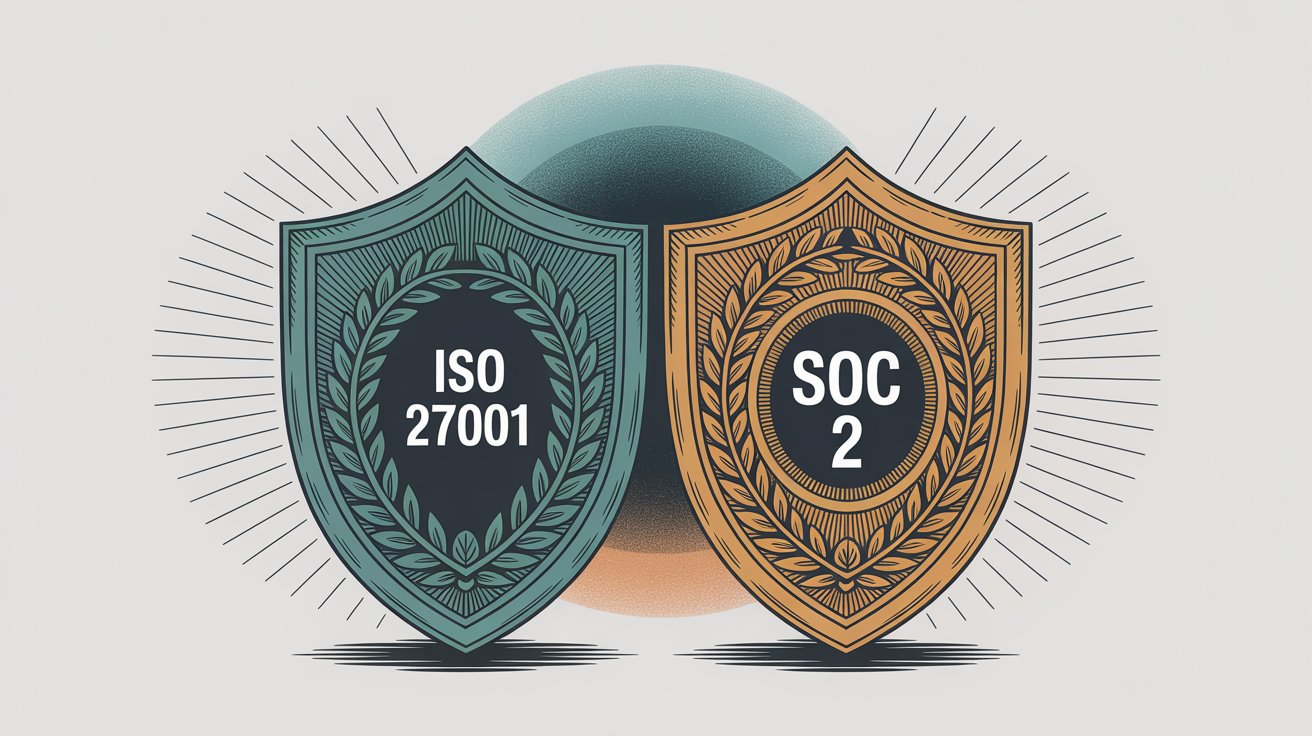
What is SOC 2 Compliance and How Does It Work?
SOC 2 stands for System and Organization Controls 2. It's an auditing standard developed by the American Institute of CPAs (AICPA) to evaluate how well you handle customer data. When you complete a SOC 2 audit, you don't get a certificate to hang on the wall. Instead, you receive an attestation report from an independent CPA firm confirming that your controls are designed appropriately and (for Type II) operating effectively over time.
Understanding the Trust Services Criteria Framework
SOC 2 examinations focus on up to five Trust Services Criteria:
- Security (mandatory for every SOC 2)
- Availability
- Processing Integrity
- Confidentiality
- Privacy
Every SOC 2 must include Security, and you can choose to include any of the other criteria based on your services and customer needs. This flexibility means SOC 2 isn't prescriptive about specific controls. You identify and implement controls to meet the chosen criteria.
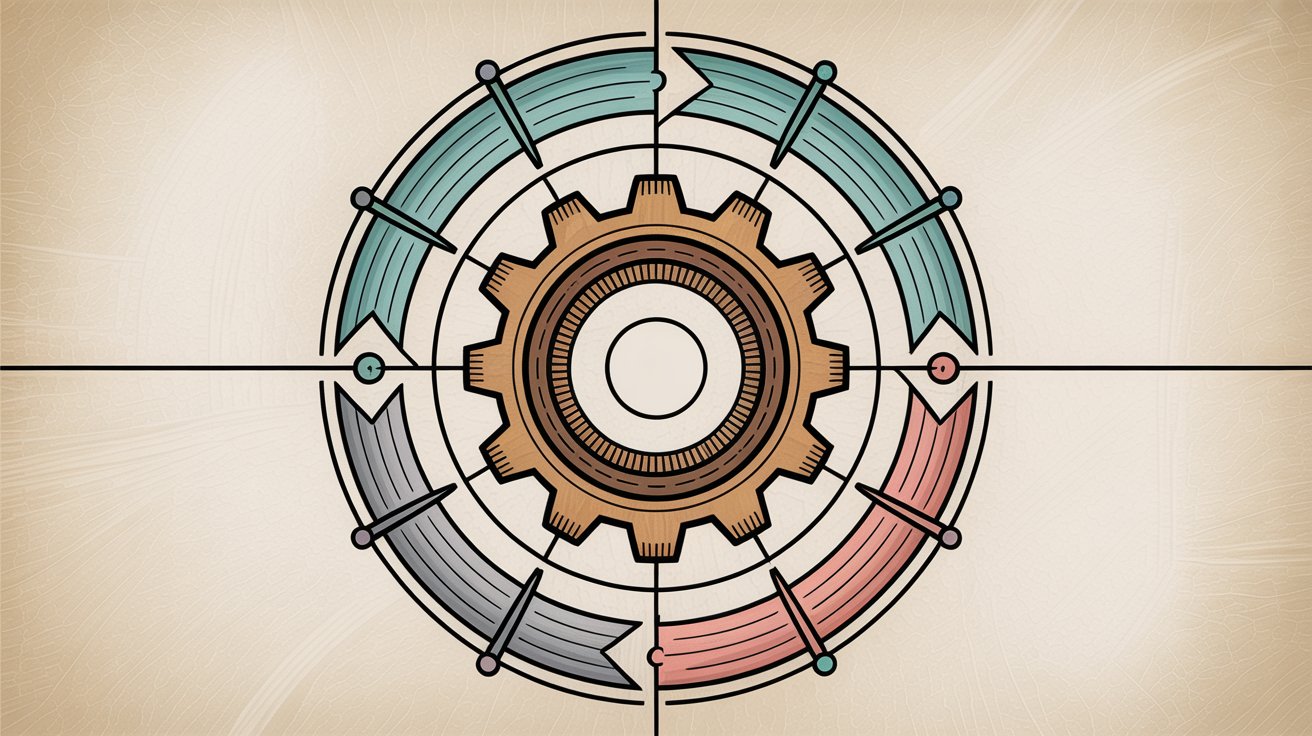
SOC 2 Type I vs Type II: What's the Difference?
There are two types of SOC 2 reports:
Type I evaluates your control design at a single point in time. Think of it as a snapshot: "Here's what we have in place right now."
Type II evaluates control effectiveness over an observation period (typically 3-12 months). This proves your controls don't just exist on paper but actually work day-to-day.
Most companies start with Type I to quickly demonstrate baseline security, then progress to Type II as they mature. SOC 2 reports are widely requested by U.S. enterprise clients, especially for SaaS and cloud service providers, to ensure you have sound data protection practices.
While there's technically no "SOC 2 certification" to obtain, companies often refer to themselves as "SOC 2 compliant" when they can produce a clean audit report. It's an auditing framework that provides customers with assurance through an auditor's attestation of your security controls.
What is ISO 27001 Certification and How Does It Work?
ISO/IEC 27001 is an international standard for establishing an effective Information Security Management System (ISMS). Published by ISO and the IEC, ISO 27001 outlines complete requirements and controls to manage information security holistically across your organization.
Unlike SOC 2, ISO 27001 is a formal certification: if an accredited body's audit finds your ISMS meets the standard's requirements, you receive an ISO 27001 certificate. It's a credential you can display publicly.
How the ISMS Approach Works
Achieving ISO 27001 involves implementing a broad range of security controls. The latest 2022 version includes 93 controls (down from 114 in the 2013 version) and embedding security risk management and continuous improvement into your operations.
Core ISMS Requirements:
✓ Define your ISMS scope
✓ Implement required policies and procedures
✓ Perform risk assessments
✓ Treat identified risks on an ongoing cycle
Understanding the ISO 27001 Certification Process
ISO 27001 certification audits are conducted in two stages:
Stage 1 reviews your ISMS documentation and readiness.
Stage 2 is a thorough evaluation of control implementation and effectiveness.
If you pass, you receive a certificate valid for three years, with annual surveillance audits to ensure you're maintaining compliance.
ISO 27001 is internationally recognized and often considered the "gold standard" for information security, especially in Europe and Asia. It's commonly pursued by organizations that operate globally or serve clients who demand a formal certification of security excellence.
What SOC 2 and ISO 27001 Have in Common
Before diving into differences, you should know that SOC 2 and ISO 27001 have substantial overlap. According to AICPA mapping, there's roughly an 80% overlap in the criteria and controls they cover.
Security Requirements Both Frameworks Share
✓ Independent third-party audits
✓ Rigorous documentation of policies and controls
✓ Continuous compliance (not one-and-done efforts)
✓ Similar security controls around access management, encryption, incident response, vendor risk
Both cover foundational security principles like security, integrity, availability, and confidentiality. The language and structure may differ, but the underlying security principles are very similar.
Why This Overlap Benefits Your Compliance Strategy
Passing either audit demonstrates to customers that you take security seriously and follow industry best practices. In many cases, achieving one will significantly simplify the other: you can map the requirements to avoid duplicate work.
If you start with SOC 2 compliance, you'll have implemented many controls that feed directly into ISO 27001 certification later. Conversely, if you start with ISO 27001 certification, mapping those controls to SOC 2 criteria is usually straightforward.
The AICPA provides a detailed mapping showing ISO 27001 and SOC 2 align closely on most controls, so you're not doing double the work by pursuing both.
ISO 27001 vs SOC 2: 9 Key Differences That Matter for Your Decision
Despite their similarities, SOC 2 and ISO 27001 have important differences that will impact which one you choose.
1. Certification vs Attestation: What You Receive at the End
| ISO 27001 | SOC 2 |
|---|---|
| Formal certification from accredited registrar | Auditor's attestation report (no certificate) |
| Certificate you can display publicly | Report you share with prospects/customers |
| International recognition | Primarily North American recognition |
ISO 27001 results in a formal certification you can display. SOC 2 provides an auditor's attestation report on your controls. Functionally, both involve rigorous audits, but some customers (especially outside the U.S.) may gravitate toward a recognized certification.
2. Regional Recognition: Which Framework Your Market Expects
SOC 2 is widely recognized in North America. If most of your clients are in the U.S., they'll likely specifically demand a SOC 2 report.
ISO 27001 is internationally recognized, especially in Europe and Asia. Global enterprises or EU-based customers are more likely to expect ISO 27001 certification.
Many U.S. companies accept ISO 27001, and many non-U.S. companies accept SOC 2 reports. The key is what your specific market expects.
3. Scope of Coverage: Management System vs Security Controls
ISO 27001 takes a broad, holistic approach. It requires you to establish an entire ISMS (Information Security Management System) covering people, processes, and technology. It's about embedding security into organizational management and culture.
SOC 2 is narrower in scope. It evaluates controls relevant to security (and any additional chosen criteria) for a particular service or system. SOC 2 focuses on the controls you have in place to protect customer data, not a full organizational management system.
In Practice:
- ISO 27001 touches more areas (business continuity, compliance obligations) via required risk assessments and Annex A controls
- SOC 2 sticks to the Trust Criteria areas (security, availability, etc.)
4. Control Requirements: Prescriptive vs Flexible Approach
ISO 27001 is more prescriptive. It comes with 93 required controls in the 2022 edition, covering everything from access control to cryptography to supplier security. You must implement those controls (or formally document why any control isn't applicable in a Statement of Applicability).
SOC 2 is more flexible. It's outcome-focused. It specifies high-level criteria but allows you to choose and design the controls to meet those criteria.
Example:
ISO 27001 might explicitly require a clean desk policy. SOC 2 might not mention it at all, but as long as your controls prevent unauthorized data access, you're fine.
This means SOC 2 can be adapted to your business more easily, while ISO 27001 ensures you cover a complete baseline of controls.
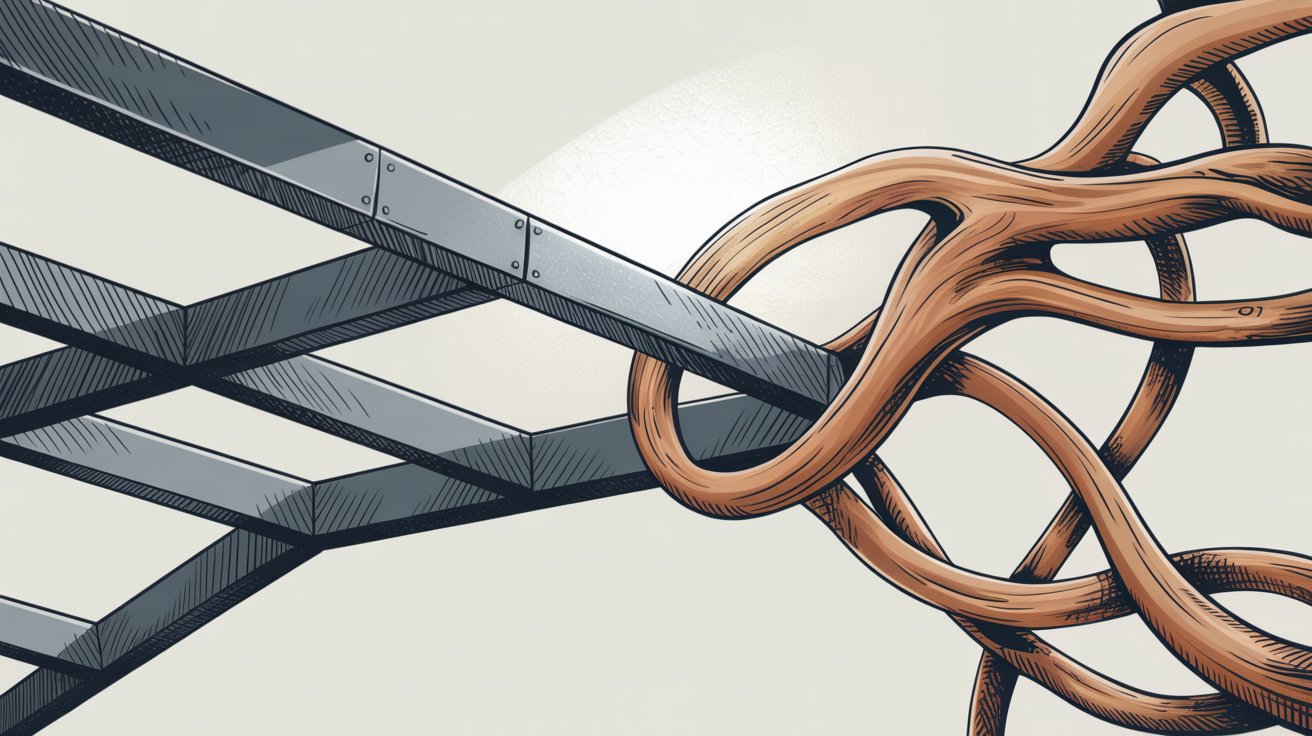
5. Documentation Requirements: What You Need to Prepare
ISO 27001 demands extensive documentation:
- Information security policy
- Risk assessment reports
- Risk treatment plans
- ISMS scope document
- Statement of Applicability
- Evidence of security training
- Internal audit reports
ISO 27001 is more prescriptive about documentation requirements. The ISO auditor will check that all required documents and records are in place and maintained.
SOC 2 requires solid documentation (policies, procedures, and a description of your system and controls), but it's generally less formal in documentation demands. There's no published list of "must-have documents" for SOC 2.
Think of it this way:
- ISO 27001: Implementing an entire documented security program
- SOC 2: Proving your key controls work in that program

6. Audit Process and Timeline: How Long Each Takes
ISO 27001:
- Audits by accredited certification bodies (not CPAs)
- Certificate valid for 3 years
- Annual surveillance audits in years 2 and 3
- Recertification audit in year 3
SOC 2:
- Audits by licensed CPA firms
- Type II reports typically renewed annually
- Continuous cycle: finish one audit, maintain controls, repeat
ISO 27001's certification process is multi-stage with longer validity. SOC 2 is an ongoing annual compliance attestation for most companies.
7. How Long Does It Take to Get Certified?
Traditional timelines (without automation):
| Framework | Preparation | Audit Window | Total Time |
|---|---|---|---|
| ISO 27001 | ~4 months | ~6 months | ~10 months |
| SOC 2 Type II | ~4 months | 3-12 months | 7-12+ months |
| SOC 2 Type I | ~3 months | ~2 months | ~3-5 months |
ISO 27001 certification can take longer for initial certification because you need to build an entire IMS and run it for a period before certification. SOC 2 Type I can often be achieved faster since you can limit the scope and only need a snapshot of controls.
But these timelines are changing dramatically. With modern compliance automation platforms like Comp AI, companies are achieving audit readiness in days instead of months. More on that below.
8. Cost Comparison: What to Budget For
ISO 27001 certification audits tend to cost more because they involve more audit days reviewing a broader set of processes and controls.
Traditional pricing for compliance audits has been a significant barrier for startups:
| Audit Type | Cost Range | With Comp AI |
|---|---|---|
| ISO 27001 certification | $10,000 - $50,000 | $5,000 - $10,000 |
| SOC 2 Type I | $10,000 - $20,000 | $15,000+ |
| SOC 2 Type II | $30,000 - $60,000 | $15,000+ |
These are audit fees alone. Traditional approaches don't include the internal work or any software/services to get ready. However, compliance automation platforms like Comp AI bundle the platform, evidence collection, and audit support at significantly lower costs than traditional providers.
Also Consider:
- ISO 27001: Ongoing surveillance audit costs each year
- SOC 2: Yearly audit fees for Type II renewals
With traditional approaches, you'd budget in the tens of thousands for either framework. The bigger factor is often the internal effort required, which can dwarf the audit fees if you're doing everything manually. Modern compliance automation platforms dramatically reduce both the audit fees and internal effort, making compliance accessible even for early-stage startups.
9. Organizational Impact: Culture Change vs Process Implementation
ISO 27001 often requires a culture shift toward formal security management. You'll involve top management in setting security objectives, conduct company-wide risk assessments, train staff on ISMS policies. It's a company-wide project.
SOC 2, while still requiring executive buy-in, is frequently led by a smaller team (security or engineering) focusing on specific control implementations and evidence collection.
For many startups, SOC 2 is the first compliance exercise, while ISO 27001 might come later when the organization is slightly more mature.
Neither is trivial, but:
- ISO 27001: Broader and deeper, drives overall security excellence internally
- SOC 2: Narrower but can be tailored to immediate needs
How to Choose: SOC 2 or ISO 27001 for Your Startup?
The decision on SOC 2 vs ISO 27001 comes down to your business context. Ask yourself: What are my customers asking for? Where are they located? What will unlock revenue?
When to Choose SOC 2 First
1. Your customers are primarily in North America
SOC 2 has become the de facto standard for U.S. companies vetting vendors' security. If most of your clients (or target clients) are U.S.-based, a SOC 2 report is what they'll recognize and request during due diligence.
2. Customers or prospects are already asking for it
If you're being asked to "send over your SOC 2 report" in security questionnaires or contracts, that's a strong signal to get SOC 2 compliant ASAP. A SOC 2 Type II report is often viewed as a ticket to play for B2B SaaS sales in sectors like finance, healthcare, and enterprise IT.
3. You need a faster or more flexible route
Companies on tight timelines (a big deal pending, or a security review they need to pass this quarter) often find SOC 2 more achievable quickly. With SOC 2, you can choose a limited scope (perhaps just one product, and only the Security criteria) to keep effort manageable.
You could even do a Type I report to get something in hand fast (sometimes in a matter of weeks with the right tools) as a bridge to a Type II.
4. Your security program is still maturing
If you're a smaller company without a dedicated security governance team, SOC 2 compliance can be a practical starting point. It helps you put in place important baseline controls without immediately having to implement a formal management system.
Many startups do SOC 2 first, then tackle ISO 27001 later once they have more personnel and process in place.
When to Choose ISO 27001 First
1. You serve a global customer base or European clients
ISO 27001 is often called the "international passport" for security compliance. If you're doing business in Europe or Asia, or with multinational companies, ISO 27001 opens more doors.
In some regions (EU, UK, Australia), ISO 27001 is more commonly expected than SOC 2. For example, if you're a SaaS provider signing clients in Germany or France, an ISO 27001 certificate may carry more weight (and they might not even ask for SOC 2).
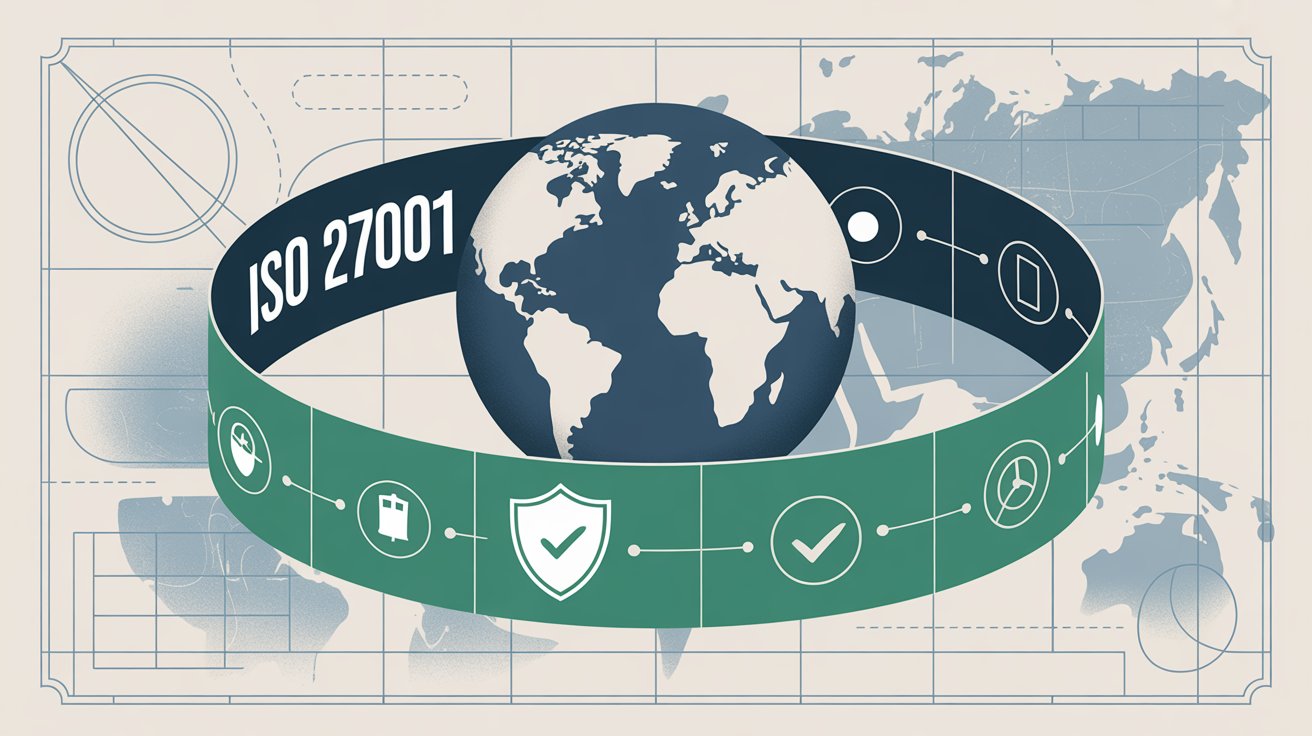
2. Customers or stakeholders specifically request it
If your sales pipeline or partners have explicitly requested an ISO 27001 certificate, that's a clear priority. This sometimes happens in due diligence with large enterprises outside the U.S., or with investors and regulators.
ISO 27001 can also sometimes satisfy regulatory expectations (it's referenced in various international standards and laws as a good-practice framework).
3. You want a complete, repeatable security framework
Some organizations choose ISO 27001 not just for marketing, but because they genuinely want to up-level their internal security practices in a structured way.
ISO 27001 is great for building a strong security program with management support, risk management, and continuous improvement. If your philosophy is that security should be ingrained in everything the company does, ISO 27001 sets that tone.
4. Your market or competitors lean toward ISO certs
In some sectors, ISO 27001 is almost a given. Cloud hosting providers, fintech companies in Europe, or IT services firms that work with governments might all showcase ISO 27001 certification.
If all your close competitors are certified, you may need it to level the playing field when customers compare vendors.
Can You Get Both SOC 2 and ISO 27001?
Choosing one now doesn't mean you'll never need the other. Many organizations pursue both SOC 2 and ISO 27001 eventually to meet different customer expectations and have full coverage.
The good news: the two frameworks complement each other. If you start with SOC 2, you'll have implemented many controls that feed directly into ISO 27001 certification later. Conversely, if you start with ISO 27001, mapping those controls to SOC 2 criteria is usually straightforward.
With an 80%+ overlap in controls, you're not doing double the work by pursuing both. The incremental effort for the second framework is far less than the first.
Many fast-growing companies get certified in one and then pursue the other to satisfy all customer needs. For instance:
- A cloud SaaS serving both U.S. and European clients might start with SOC 2 for the U.S., then add ISO 27001 for Europe
- Or vice versa
Having both an ISO 27001 certificate and a SOC 2 Type II report signals to any client, anywhere, that you have a top-notch security program.
Just avoid trying to do both simultaneously with an under-resourced team. It's usually more efficient to tackle one, use that work for the other, and achieve dual compliance in a phased manner.
How Comp AI Accelerates Your Compliance Journey
In 2025, you're not stuck slogging through binders and spreadsheets for months to achieve compliance. Compliance automation platforms have transformed the timeline dramatically.
Traditional compliance preparation involves:
- Hundreds of hours of manual evidence collection
- Endless spreadsheets tracking controls
- Back-and-forth with auditors on missing documentation
- 6-12 months of full-time work from your security team
The Comp AI Difference
Comp AI uses AI agents to automate the most time-consuming parts of compliance:
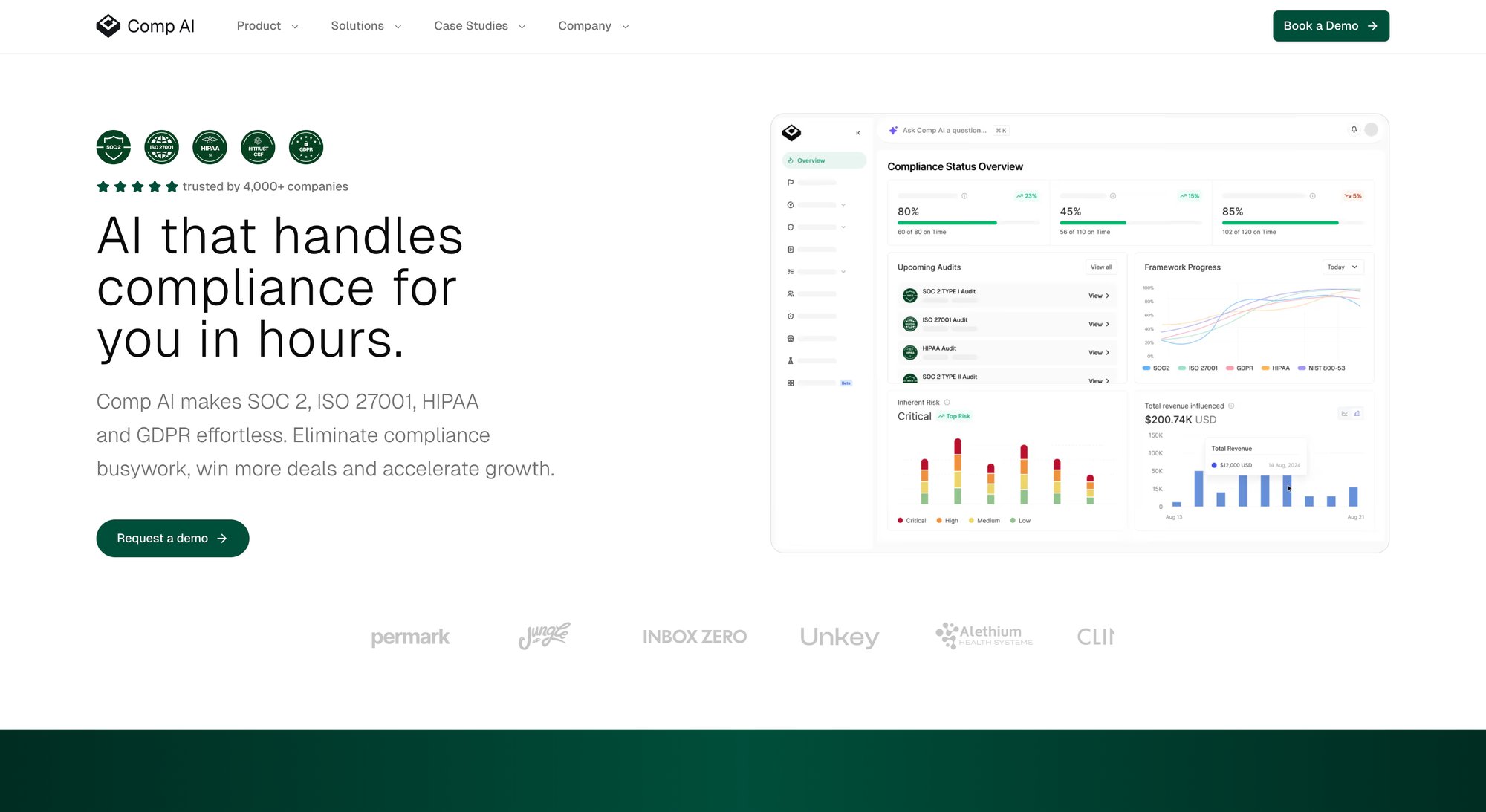
Automated Evidence Collection
Instead of manually gathering screenshots and logs for months, Comp AI's AI agents automatically hunt for and collect the evidence you need. They integrate with your existing tools (AWS, GitHub, Google Workspace, etc.) and continuously gather proof that your controls are working.
24-Hour Audit Readiness
Companies using Comp AI have achieved SOC 2 Type I audit readiness in 24 hours. Not weeks. Not months. Hours.
For ISO 27001, the timeline is similarly compressed: what traditionally takes 6+ months can be achieved in 14 days with Comp AI's automation and white-glove support.
How It Works:
- Connect your systems (AWS, GitHub, Google Workspace, Slack, etc.)
- AI agents scan your infrastructure and applications continuously
- Evidence is collected automatically in real-time
- Policy templates pre-built for both SOC 2 and ISO 27001
- White-glove support from compliance experts who guide you through the process
Multi-Framework Support
One of the biggest advantages of using Comp AI is that it supports multiple frameworks simultaneously:
- SOC 2 (Type I and Type II)
- ISO 27001
- HIPAA
- GDPR
- And 25+ other frameworks
This means if you start with SOC 2 and later need ISO 27001, you're not starting from scratch. The controls you've implemented, the evidence you've collected, and the policies you've created all carry over.
Comp AI maps the overlapping requirements automatically, so pursuing the second certification is exponentially easier than the first.
Real Results from Real Companies
Persona AI needed SOC 2 certification to close a major enterprise deal. They had only 30 days. Using Comp AI, they went from zero to audit-ready in under a week and passed their SOC 2 Type I audit on the first try.
"We were only 30 days away from losing a deal. Comp AI got us audit-ready in less than a week." - CTO at Persona AI
This isn't about cutting corners. It's about using automation to eliminate the manual busywork (evidence gathering, screenshot collection, log compilation) while maintaining the same rigorous security controls.
The Money-Back Guarantee
Comp AI is so confident in their approach that they offer a 100% money-back guarantee. If you don't pass your audit, you get a full refund. No other compliance platform backs their service this way.
Getting Started
If you're trying to decide between SOC 2 and ISO 27001, or you know you need one (or both) and want to get there faster, book a demo with Comp AI.
They'll help you:
- Assess which framework makes sense for your business
- Map out a timeline to get audit-ready
- Automate the evidence collection process
- Connect you with the right auditors
- Guide you through every step of the compliance journey
Instead of spending 6-12 months on compliance prep, you can be audit-ready in days or weeks and get back to building your product and closing deals.
Frequently Asked Questions
Is SOC 2 or ISO 27001 a certification?
ISO 27001 is a formal certification issued by an accredited certification body. You receive a certificate you can display publicly.
SOC 2 is not technically a certification. It's an attestation report from a CPA firm confirming that your controls meet the Trust Services Criteria. While there's no certificate, companies often refer to themselves as "SOC 2 compliant" when they have a clean audit report.
Can I get both SOC 2 and ISO 27001?
Yes, and many organizations do. The frameworks have roughly 80% overlap in controls, so pursuing both doesn't mean doing double the work.
If you achieve one first, the incremental effort to get the other is significantly reduced. Many companies start with SOC 2 for their U.S. market, then add ISO 27001 for international clients (or vice versa).
How long does it take to get SOC 2 or ISO 27001 certified?
Traditional timelines without automation:
- SOC 2 Type I: 3-5 months
- SOC 2 Type II: 7-12+ months
- ISO 27001: 10+ months
With compliance automation platforms like Comp AI:
- SOC 2 Type I: 24 hours to audit-ready
- SOC 2 Type II: A few weeks to audit-ready (still need the observation period)
- ISO 27001: 14 days to audit-ready
The observation period for SOC 2 Type II (typically 3-12 months) is a hard requirement, but you can dramatically reduce the prep time before that period starts.
Which is harder: SOC 2 or ISO 27001?
Neither is objectively "harder," but they require different levels of organizational maturity:
ISO 27001 is more complete. It requires building an entire Information Security Management System with formal risk management, management reviews, and organization-wide policies. The documentation requirements are more extensive.
SOC 2 is more focused. It's narrower in scope (specific systems/services rather than the whole organization) and more flexible in how you meet the criteria. Many startups find SOC 2 less intimidating for their first compliance effort.
Do I need SOC 2 if I have ISO 27001?
It depends on your customers. ISO 27001 is an internationally recognized certification, but many U.S. companies specifically ask for SOC 2 reports in their vendor security assessments.
If you have ISO 27001, you can often use that to satisfy some customers, especially international ones. But if a U.S. enterprise client explicitly requires a SOC 2 report in their procurement process, you'll need to get one.
The good news: if you already have ISO 27001, getting SOC 2 is much easier because you've already implemented most of the required controls.
How much does SOC 2 vs ISO 27001 cost?
Traditional audit fees have been expensive:
- SOC 2 Type I: $10,000 - $20,000
- SOC 2 Type II: $30,000 - $60,000
- ISO 27001: $10,000 - $50,000
These are audit fees only. The bigger cost is usually the internal effort: months of employee time gathering evidence, writing policies, implementing controls.
However, with modern compliance automation platforms like Comp AI, costs are significantly lower:
- SOC 2 Type I with Comp AI: $5,000 - $10,000
- SOC 2 Type II with Comp AI: $15,000+
- ISO 27001 with Comp AI: $15,000+
Traditional audit fees only cover the audit itself. The bigger cost is usually the internal effort: months of employee time gathering evidence, writing policies, implementing controls.
Comp AI dramatically reduces both costs by automating evidence collection and providing white-glove support. Their transparent pricing includes the automation platform, continuous evidence collection, policy templates, and audit support - making enterprise-grade compliance accessible even for early-stage startups.
Can a startup get ISO 27001 or SOC 2 certified?
Absolutely. Both frameworks are achievable for startups of any size. In fact, many early-stage startups pursue SOC 2 or ISO 27001 to unlock enterprise deals.
The challenge has traditionally been the time and resources required. A 10-person startup might not have 6 months and dedicated security personnel to spare.
That's where automation platforms like Comp AI make a difference. Startups can achieve audit readiness in days or weeks instead of months, without hiring a full compliance team.
What happens after I get certified?
For ISO 27001:
Your certificate is valid for 3 years, but you'll have annual surveillance audits in years 2 and 3 to ensure you're maintaining compliance. In year 3, you'll have a recertification audit to renew for the next 3-year cycle.
For SOC 2:
Most companies pursue annual SOC 2 Type II reports. Each year, you'll have a new audit covering the previous 6-12 months of operation. Customers typically expect a fresh report annually.
Continuous Compliance:
Both frameworks require ongoing effort. You need to maintain your controls, update policies as your business changes, collect evidence continuously, and prepare for the next audit.
Platforms like Comp AI handle the continuous evidence collection automatically, so maintaining compliance is far less manual work than the initial certification.
Which compliance framework should a SaaS startup choose first?
For most SaaS startups:
If your primary market is the U.S.: Start with SOC 2. It's what U.S. enterprise buyers expect, it's more flexible and faster to achieve, and it establishes a solid foundation.
If you have significant international business (especially in Europe): Consider ISO 27001 first, or pursue both simultaneously with a phased approach.
If you're not sure: Listen to what your customers are asking for. If prospects are requesting SOC 2 reports in security questionnaires, that's your signal. If you're losing deals because you don't have ISO 27001, that's your answer.
The best approach for many startups: Get SOC 2 first to unlock U.S. deals, then add ISO 27001 when you expand internationally. The work overlaps enough that the second certification is far easier than the first.
Making Your Decision
Choosing between ISO 27001 and SOC 2 isn't about which is "better." It's about which one your business needs right now to unlock revenue, satisfy customers, and demonstrate security excellence.
Start with these questions:
- What are my customers explicitly asking for?
- Where are my customers located (U.S. or international)?
- How quickly do I need to be compliant?
- What's my team's capacity for compliance work?
- Do I have plans to expand globally?
If you're primarily serving U.S. customers and need something achievable quickly, SOC 2 is usually the right first step.
If you serve international markets or want the complete benefits of an ISMS, ISO 27001 is the stronger choice.
And remember: you'll likely need both eventually if you have global ambitions. The frameworks complement each other beautifully.
Take the Next Step
Whether you choose SOC 2, ISO 27001, or plan to pursue both, the traditional 6-12 month compliance grind is no longer necessary.
Comp AI can get you audit-ready in days or weeks instead of months, with AI-powered evidence collection, pre-built policy templates, and white-glove support from compliance experts.
Ready to get started?
Book a demo with Comp AI to discuss your specific compliance needs and get a customized roadmap to certification. See exactly how Comp AI can compress your timeline from months to days while maintaining the same rigorous security standards.
Don't let compliance slow down your growth. Get the certification you need and get back to building your business.
Share this article
Help others discover this content
More from Compliance Hub
Explore more insights and stay ahead of regulatory requirements.
SOC 2 Penetration Testing Requirements (2025 Guide)
Learn how penetration testing supports SOC 2 compliance. Get practical guidance on testing types, frequency, costs, and auditor expectations.
SOC 2 for AI Companies: Complete Guide (2025)
Your complete 2025 guide to SOC 2 for AI companies. Covers requirements, costs, timelines, and how to achieve compliance in weeks instead of months.
Continuous Compliance Monitoring: Guide (2025)
Learn how continuous compliance monitoring keeps you audit-ready 24/7. Save hundreds of hours and close deals faster with real-time visibility.